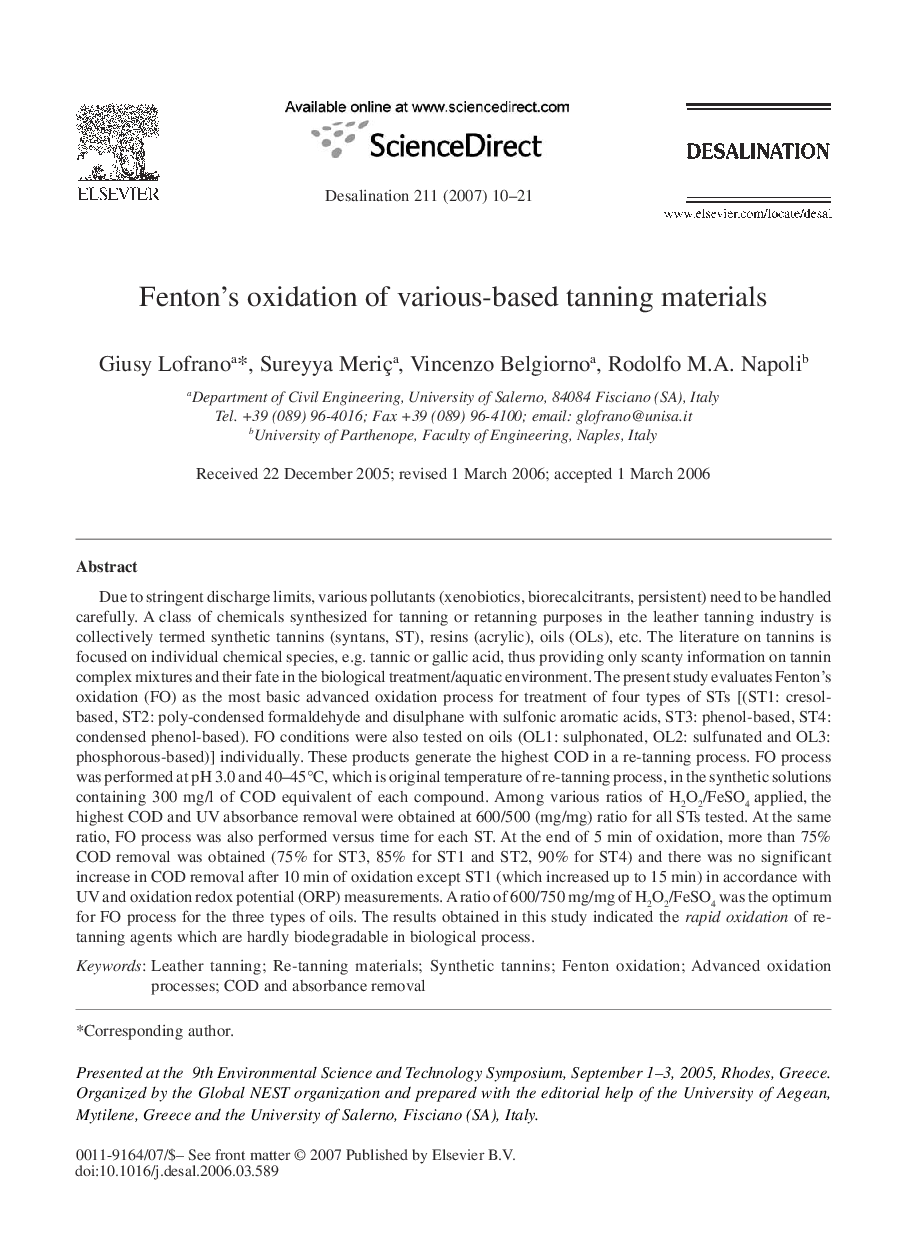| کد مقاله | کد نشریه | سال انتشار | مقاله انگلیسی | نسخه تمام متن |
|---|---|---|---|---|
| 627981 | 1455479 | 2007 | 12 صفحه PDF | دانلود رایگان |

Due to stringent discharge limits, various pollutants (xenobiotics, biorecalcitrants, persistent) need to be handled carefully. A class of chemicals synthesized for tanning or retanning purposes in the leather tanning industry is collectively termed synthetic tannins (syntans, ST), resins (acrylic), oils (OLs), etc. The literature on tannins is focused on individual chemical species, e.g. tannic or gallic acid, thus providing only scanty information on tannin complex mixtures and their fate in the biological treatment/aquatic environment. The present study evaluates Fenton’s oxidation (FO) as the most basic advanced oxidation process for treatment of four types of STs [(ST1: cresol-based, ST2: poly-condensed formaldehyde and disulphane with sulfonic aromatic acids, ST3: phenol-based, ST4:condensed phenol-based). FO conditions were also tested on oils (OL1: sulphonated, OL2: sulfunated and OL3:phosphorous-based)] individually. These products generate the highest COD in a re-tanning process. FO process was performed at pH 3.0 and 40–45°C, which is original temperature of re-tanning process, in the synthetic solutions containing 300 mg/l of COD equivalent of each compound. Among various ratios of H2O2/FeSO4 applied, the highest COD and UV absorbance removal were obtained at 600/500 (mg/mg) ratio for all STs tested. At the same ratio, FO process was also performed versus time for each ST. At the end of 5 min of oxidation, more than 75% COD removal was obtained (75% for ST3, 85% for ST1 and ST2, 90% for ST4) and there was no significant increase in COD removal after 10 min of oxidation except ST1 (which increased up to 15 min) in accordance with UV and oxidation redox potential (ORP) measurements. A ratio of 600/750 mg/mg of H2O2/FeSO4 was the optimum for FO process for the three types of oils. The results obtained in this study indicated the rapid oxidation of re-tanning agents which are hardly biodegradable in biological process.
Journal: Desalination - Volume 211, Issues 1–3, 10 June 2007, Pages 10-21